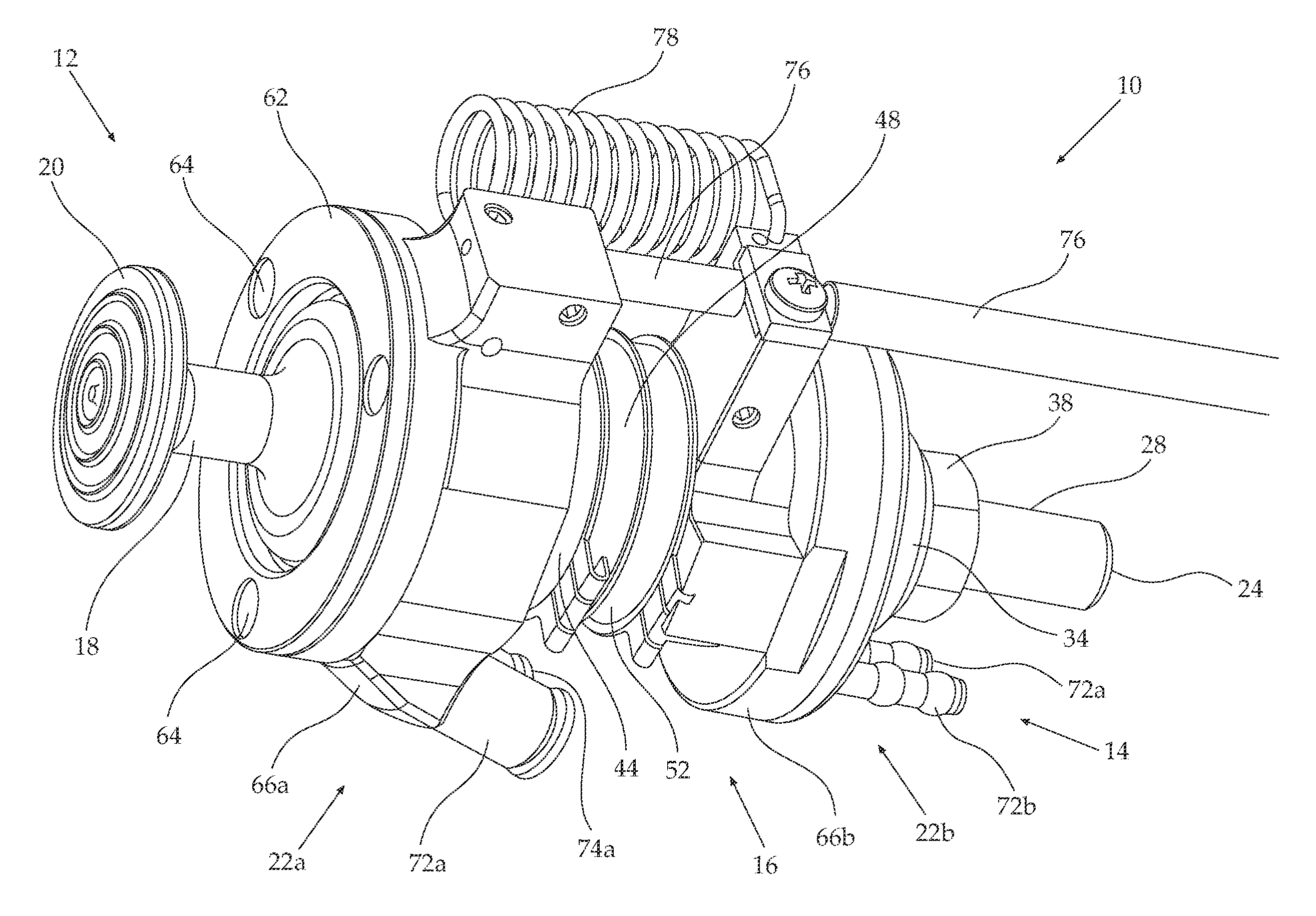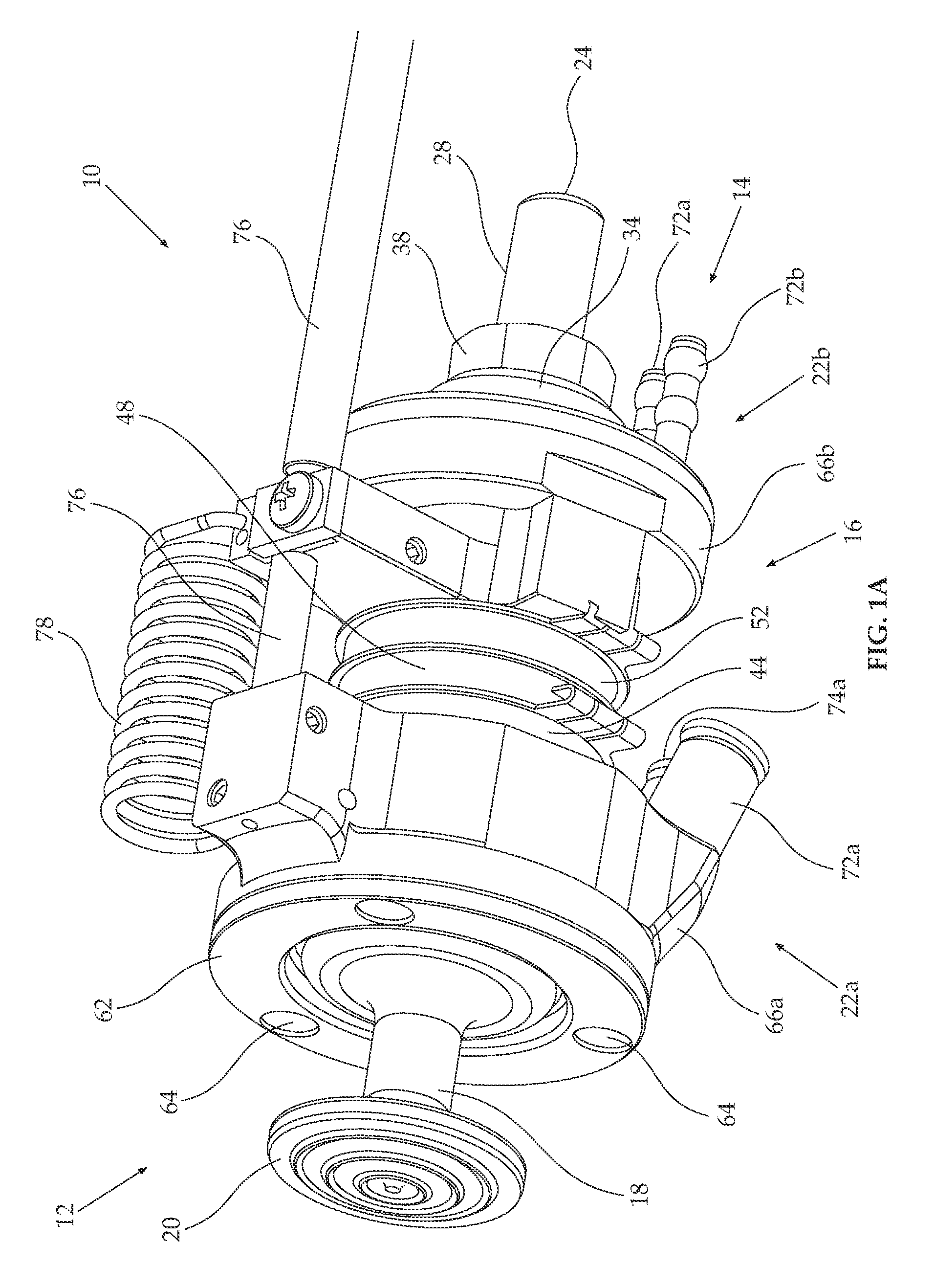Concurrent treatment with thermal and acoustic energy
a technology of thermal and acoustic energy and treatment, applied in the field of body tissue treatment with energy, can solve the problems of unaesthetic excess fat, deep penetration into the body of the treated subject, and tiring both the treated subject and the operator
- Summary
- Abstract
- Description
- Claims
- Application Information
AI Technical Summary
Problems solved by technology
Method used
Image
Examples
first embodiment
of a Device According to the Teachings Herein
[0147]An embodiment of a device for the treatment of a volume of material with energy through a surface, specifically for treatment of subcutaneous fat as described herein, device 10, is schematically depicted in FIGS. 1A-1F. In FIG. 1A, device 10 is depicted fully assembled, viewed in perspective from a distal end 12. In FIG. 1B, device 10 is depicted fully assembled, viewed in perspective from a proximal end 14. In FIG. 1C, device 10 is depicted with some components removed to show details of construction, viewed from the side. In FIGS. 1D, 1E and 1F, device 10 is depicted with some components removed to show details of construction, viewed in perspective.
[0148]Device 10 is a probe configured for concurrently depositing an effective amount of thermal energy into a volume of hypodermis with a unipolar RF field through a skin surface and for conveying an effective amount of acoustic energy into the volume of hypodermis through a skin surf...
second embodiment
of a Device According to the Teachings Herein
[0171]An additional embodiment of a device for the treatment of a volume of material with energy through a surface, specifically for the treatment of subcutaneous fat as described herein, device 80, is schematically depicted in FIG. 2 during use for treatment of a volume 82 of tissue including subcutaneous fat 84 through a skin surface 86. It is important to note, particularly with regard to FIG. 2, that some objects are not depicted to scale for clarity.
[0172]Device 80 comprises a probe 88, substantially identical to device 10 described with reference to FIG. 1, and additionally comprises a controller 90, an RF energy source 92 (e.g., such as described in U.S. Pat. No. 7,630,774) functionally associated with a sonotrode / RF applicator 18 of probe 88 through controller 90 and coaxial cable 76 and an ultrasound power source 94 (e.g., such as described in US 2011 / 0213279) functionally associated with an ultrasound transducer 16 through contr...
PUM
 Login to View More
Login to View More Abstract
Description
Claims
Application Information
 Login to View More
Login to View More - R&D
- Intellectual Property
- Life Sciences
- Materials
- Tech Scout
- Unparalleled Data Quality
- Higher Quality Content
- 60% Fewer Hallucinations
Browse by: Latest US Patents, China's latest patents, Technical Efficacy Thesaurus, Application Domain, Technology Topic, Popular Technical Reports.
© 2025 PatSnap. All rights reserved.Legal|Privacy policy|Modern Slavery Act Transparency Statement|Sitemap|About US| Contact US: help@patsnap.com



